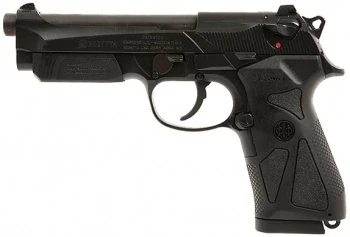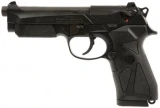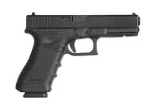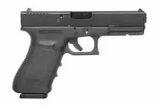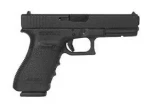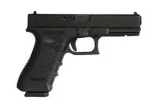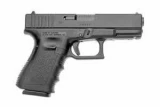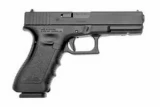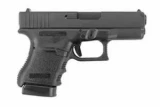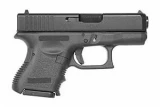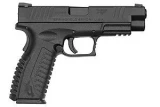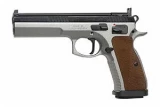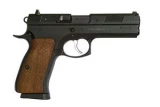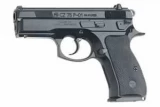Beretta 90-TWO vs Radom MAG 95
Put handguns head to head to compare caliber and more.
|
$409.85
|
vs |
$0.00
|
| Handguns | Beretta 90-TWO | Radom MAG 95 |
|---|---|---|
| Summary | ||
| Rating | ||
| Rank | ||
| Action | Double Action | |
| Caliber | 9x19mm Parabellum | |
| Capacity | 17+1 | 17+1 |
| Sights | Night Sights | Front Blade |
| Barrel Length | 4.9" | 4.5" |
| Finish | Black | Stainless Steel |
| Gun Type | Pistol | Pistol |
| Weight | 43.83 oz | |
| Details | ||
| Brand | Beretta | |
| Reviews | See 20 Reviews | N/A |
| Prices | ||
| MSRP | $413.85 | $0.00 |
| Used Price | $289.70 | $0.00 |
| Sale Price | $372.47 | $0.00 |
Handguns Descriptions
Beretta 90-TWO
The newly designed frame of 90two pistol ensures trouble-free insertion and holster extraction, thanks to its rounded and truly snag-free surfaces. Inside the frame, near the disassembly lever, a metallic recoil buffer reduces the impact of the slide assembly against the frame during the shooting cycle. By redistributing the stresses, the recoil buffer increases the service life of the firearm. Trigger guard is also rounded to ensure, when firing with two hands, the correct positioning of the supporting hand.
Radom MAG 95
The MAG 95 is a Polish 9mm Luger semi-automatic pistol (short recoil operated, locked breech) designed to fire the 9mm Luger cartridge. It was designed by designed by Marian Gryszkiewicz and manufactured by Łucznik Arms Factory (Fabryka Broni Łucznik) in Radom for the Polish Border Guard and Prison Guard from 1995 to 2000. The MAG-95 pistol relies to a large extent on design features from the later Browning designs, and others, combining features from several weapons into one pistol. The locking system is the widely used dropping barrel and cam action of the Browning series. This is combined with a double-action trigger mechanism combined with a hammer decocking lever which allows the external hammer to be lowered in safety when a round is chambered. Only a positive 50 N pull on the trigger will allow the hammer to recock for firing the round. In 1995 the pistol was evaluated by the Polish Army. It had advantages over a competitor, the WIST-94, such as better reliability, durability and safety (better protection against accidental discharge, when dropped). However, the MAG model was rejected by the Army, because it did not meet technical specifications, that were set in late 1993, exceeding mass (800g) and dimensional criteria (190x135x33 mm).

